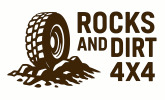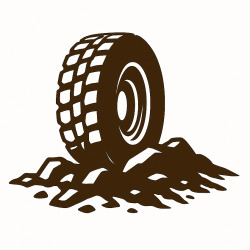Building your own 270-degree overland awning doesn’t have to break the bank or require a degree in engineering. Overland Under Budget proves that with some basic welding skills, a trip to the steel supply, and a clever design, you can create a professional-grade awning system for under $150.

The beauty of this DIY approach lies in its simplicity and effectiveness. Using 3/4" square tubing with 1/16th wall thickness, skateboard bearings, and a basic steel plate hinge, this homemade awning delivers the same quick setup and takedown that you’d expect from premium units costing ten times more. The secret sauce is in the hinge design - three arms positioned at specific intervals that allow the awning to swing out in a 270-degree arc around your rig.
What makes this build particularly clever is how it addresses the common pain points of budget awnings. Instead of flimsy materials that flutter in the wind or complex setups that take forever to deploy, this design uses robust steel construction and a simple three-arm system that can be opened or closed in under two minutes. The skateboard bearings aren’t just a cost-saving measure - they actually provide smooth operation and reduce wear on the tarp material.
The materials list reads like a trip to your local steel supply and hardware store. You’ll need about 60 feet of square tubing (three 20’ lengths at roughly $10 each), some 3/16" steel plate for the hinge, skateboard bearings, and basic hardware. The most expensive single item? The welder, but as the builder points out, once you have one, it opens up endless possibilities for other projects. With some of the crazy cheap welders on Amazon, you could be putting this project together this weekend!

The updated version of this awning addresses some of the original’s limitations. The new hinge design is 50% slimmer and eliminates the need to sew your own storage bag by using an ARB awning bag that costs just $35. This upgrade alone saves hours of work and delivers a more professional finished product. The refined design also incorporates better lifter arms with skateboard bearings that roll smoothly against the tarp material without causing wear or damage.
For the tarp itself, you can start simple with a Harbor Freight heavy-duty tarp for under $10. It’s rip-stop, waterproof, and perfectly sized for this application. The beauty of this approach is that you can always upgrade to a higher-quality tarp later without modifying the awning structure.
The construction process requires basic welding skills, but nothing too advanced. Most of the cuts can be made with a miter saw equipped with a metal-cutting blade, and the welding is straightforward tack-and-seam work. The key is taking time to properly lay out the hinge geometry - getting those arm positions right is what makes the difference between a smooth-operating awning and one that binds up or doesn’t provide full coverage.
Weight comes in at just under 36 lb including the bag and hardware, making it competitive with commercial units while costing a fraction of the price. The mounting system is designed to work with basket-style roof racks, distributing the load across the rack’s framework rather than concentrating stress at a single point.
This project represents exactly what the overlanding community does best - taking expensive commercial solutions and figuring out how to build them better for less money. The result is an awning that’s not just cheaper than store-bought alternatives, but often more durable and better suited to your specific needs. Plus, when something breaks on the trail, you’ll know exactly how to fix it because you built it yourself.
The real test of any camping gear is how often you actually use it. Quick setup and takedown means you’ll deploy this awning for lunch stops, brief weather delays, or just because you want some shade while checking the map. That’s the difference between gear that sits unused and gear that becomes an essential part of every adventure.
Discover More
- How to Turn a Nearly-New $11,700 Wrecked Ranger Into a Sweet Budget Build
- This '03 Taco Looks Stock... Until You See It Skimming Whoops
- A Minimal, Removable, Stealth Camper in a Toyota Tundra Bed
- A Sleeper Taco on 35s/16" Travel/Supercharged That Does It All
- Budget Workshop Goals - Why Shipping Containers Are the New DIY Secret
- Build a 270 Degree Overland Awning for Under $150 - Here’s How
- From Salvage 4Runner to Race-Ready Beast - A DIY King of the Hammers Build
- From Stock to Savage: This Toy 4Runner Build Conquers Rocks, Desert...and Daily Life
- How a Stock Taco Became a 60 MPH Whoop-Slayer (Hint: Ls3)
- How a Wildland Firefighter Crafted the Ultimate Off-Grid Basecamp
- How Jack Turned a Daily Driver Taco Into a 37” Tire Beast - It Always Starts With Marketplace...
- Inside the Wild Build: Suzuki Samurai Goes Ultra4 Racing at KOH
- Is 7.5mpg Worth It to Run 37s on Your 4Runner and Become a Rockcrawling Beast?
- Notch a Tube in 2 Minutes, 38 Seconds - Without a Tube Notcher
- Supercharger, Long-Travel, 37s, and Overlanding - Is This the Tacoma You've Been Looking For?
- This Awesome DIY Taco Camper Build Proves You Don’t Need Big Bucks for Big Adventure
- This Clapped-Out Taco on 37s Is the Overland Rig You Wish You Had
- This Jeep Gladiator Packs a 426 Hemi for Real Off-Road Adventure in the Canadian Backcountry
- Unlock the Truth: Spring Over or Spring Under for Ultimate Off-Road Performance?
- What It’s Really Like to Race the Every Man Challenge at King of the Hammers See more

